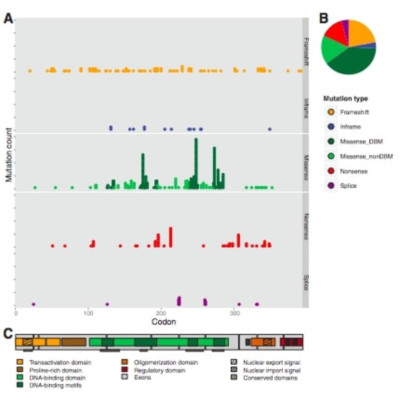Abstract
In breast cancer, the TP53 gene is frequently mutated and the mutations have been associated with poor prognosis. The prognostic impact of the different types of TP53 mutations across the different molecular subtypes is still poorly understood. Here, we characterize the spectrum and prognostic significance of TP53 mutations with respect to the PAM50 subtypes and integrative clusters (IC).
TP53 mutation status was obtained for 1,420 tumor samples from the METABRIC cohort by sequencing all coding exons using the Sanger method.
TP53 mutations were found in 28.3% of the tumors, conferring a worse overall and breast cancer-specific survival [HR = 2.03; 95% confidence interval (CI), 1.65-2.48, P < 0.001], and were also found to be an independent marker of poor prognosis in estrogen receptor-positive cases (HR = 1.86; 95% CI, 1.39-2.49, P < 0.001). The mutation spectrum of TP53 varied between the breast cancer subtypes, and individual alterations showed subtype-specific association. TP53 mutations were associated with increased mortality in patients with luminal B, HER2-enriched, and normal-like tumors, but not in patients with luminal A and basal-like tumors. Similar observations were made in ICs, where mutation associated with poorer outcome in IC1, IC4, and IC5. The combined effect of TP53 mutation, TP53 LOH, and MDM2 amplification on mortality was additive.
This study reveals that TP53 mutations have different clinical relevance in molecular subtypes of breast cancer, and suggests diverse roles for TP53 in the biology underlying breast cancer development.
